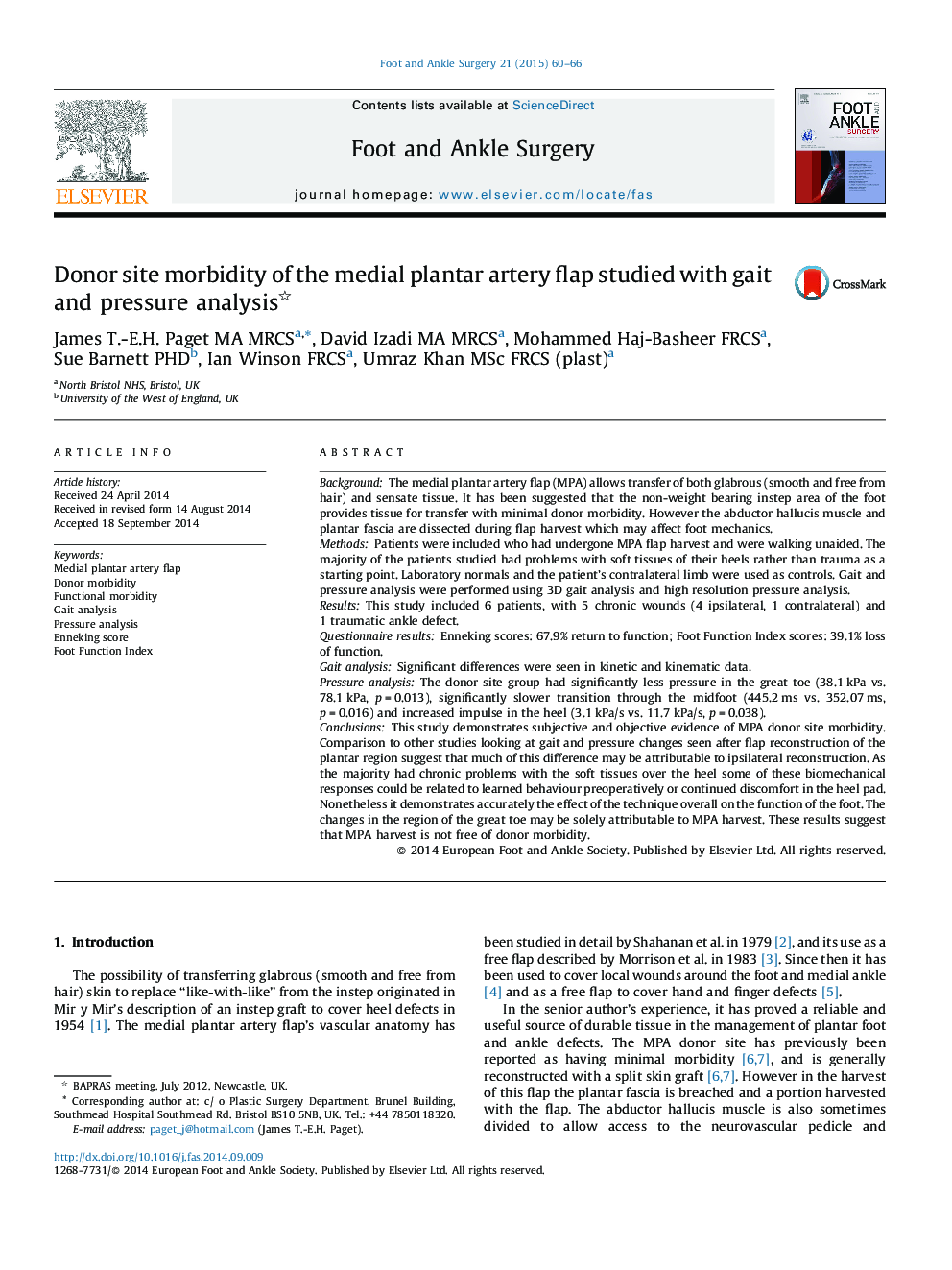| Article ID | Journal | Published Year | Pages | File Type |
|---|---|---|---|---|
| 4054574 | Foot and Ankle Surgery | 2015 | 7 Pages |
•We investigated the functional donor morbidity of the medial plantar artery flap.•We used subjective questionnaires and objective gait and pressure analysis.•Differences were seen on the donor side compared to the contralateral limb.•Whilst well tolerated, the MPA flap may cause some functional donor morbidity.
BackgroundThe medial plantar artery flap (MPA) allows transfer of both glabrous (smooth and free from hair) and sensate tissue. It has been suggested that the non-weight bearing instep area of the foot provides tissue for transfer with minimal donor morbidity. However the abductor hallucis muscle and plantar fascia are dissected during flap harvest which may affect foot mechanics.MethodsPatients were included who had undergone MPA flap harvest and were walking unaided. The majority of the patients studied had problems with soft tissues of their heels rather than trauma as a starting point. Laboratory normals and the patient's contralateral limb were used as controls. Gait and pressure analysis were performed using 3D gait analysis and high resolution pressure analysis.ResultsThis study included 6 patients, with 5 chronic wounds (4 ipsilateral, 1 contralateral) and 1 traumatic ankle defect.Questionnaire resultsEnneking scores: 67.9% return to function; Foot Function Index scores: 39.1% loss of function.Gait analysisSignificant differences were seen in kinetic and kinematic data.Pressure analysisThe donor site group had significantly less pressure in the great toe (38.1 kPa vs. 78.1 kPa, p = 0.013), significantly slower transition through the midfoot (445.2 ms vs. 352.07 ms, p = 0.016) and increased impulse in the heel (3.1 kPa/s vs. 11.7 kPa/s, p = 0.038).ConclusionsThis study demonstrates subjective and objective evidence of MPA donor site morbidity. Comparison to other studies looking at gait and pressure changes seen after flap reconstruction of the plantar region suggest that much of this difference may be attributable to ipsilateral reconstruction. As the majority had chronic problems with the soft tissues over the heel some of these biomechanical responses could be related to learned behaviour preoperatively or continued discomfort in the heel pad. Nonetheless it demonstrates accurately the effect of the technique overall on the function of the foot. The changes in the region of the great toe may be solely attributable to MPA harvest. These results suggest that MPA harvest is not free of donor morbidity.
